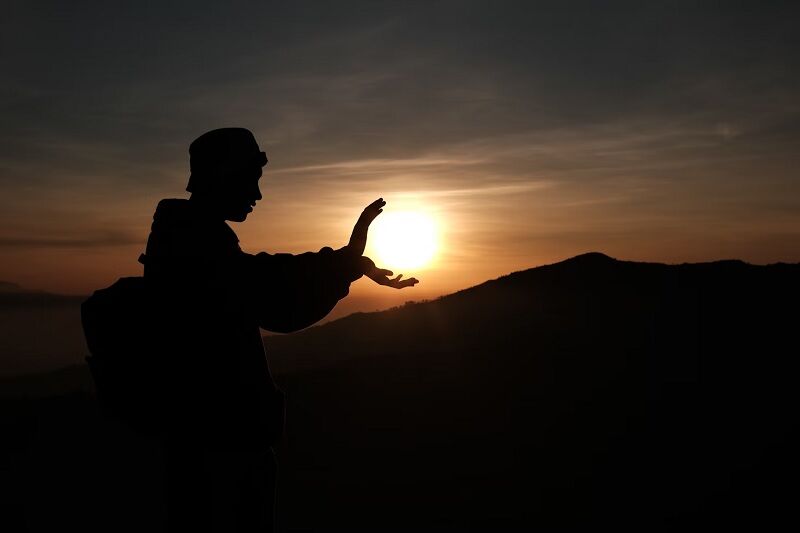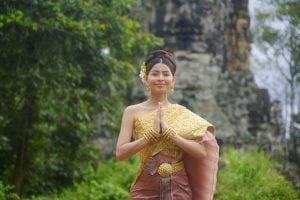Unlock the magic of Tai Chi for elders

Tai chi, a gentle form of martial arts, is gaining popularity among elders looking for an accessible way to enhance their health and well-being. With its roots deeply embedded in ancient Chinese tradition, tai chi offers a holistic approach to maintaining physical and mental balance. It’s a practice that doesn’t require any special equipment and can be done anywhere, from the comfort of your living room to the tranquility of a local park.
What makes tai chi especially appealing for elders is its adaptability and the low risk of injury. Whether you’re exploring tai chi through a local class or following along with an online video, you’ll find it’s a practice that respects your body’s limits while still challenging you to improve your balance, flexibility, and strength. With each slow, deliberate movement, you’re not just exercising; you’re embarking on a journey toward a healthier, more harmonious life.
What exactly is Tai Chi?
When you explore ways to stay fit, especially as you age, Tai Chi often emerges as a top recommendation. Originating from ancient Chinese martial arts, Tai Chi is much more than just an exercise. It’s a holistic approach that encompasses mental, emotional, and physical balance. At its core, Tai Chi involves slow, deliberate movements that are both graceful and meditative. Despite its gentle approach, it’s incredibly effective in enhancing your physical health and well-being.
Practicing Tai Chi, you’ll find it emphasizes fluid movements over muscle strain. This focus on fluidity is key to its effectiveness in improving balance and flexibility. You’re not just moving; you’re flowing. Imagine the smooth transition from one pose to another, much like water flowing in a stream. This isn’t just poetic; it’s practical. Such movements significantly reduce the risk of falls, a common concern among older adults.
Moreover, Tai Chi isn’t a one-size-fits-all exercise. Its various styles offer something for everyone, adapting to different physical capabilities and interests. While some styles might incorporate more dynamic movements, the essence of Tai Chi remains the same: to promote a sense of harmony and well-being.
Engaging in Tai Chi regularly, you’ll likely notice improved strength and flexibility. But perhaps more importantly, you’ll experience enhanced mental clarity and peace. It’s this unique combination of physical and mental benefits that sets Tai Chi apart as a comprehensive exercise perfect for elders aiming to stay fit and healthy.
How can you learn Tai Chi?

The process is straightforward and can significantly enhance your efforts to stay fit. Firstly, determine your preferred Tai Chi style. As you’ve read earlier, options range from the ancient, martial-focused Chen to the arthritis-friendly Sun Tai Chi.
One effective way to start is by exploring local classes or workshops in your area. Many community centers, gyms, and even parks in Thailand and worldwide offer Tai Chi classes tailored to elders. These classes provide a structured learning environment and the chance to connect with others on a similar path.
If you’re someone who values privacy or cannot easily access in-person classes, online Tai Chi courses are a fantastic alternative. These digital platforms offer the convenience of learning from home and often provide a wide range of instructional videos covering various Tai Chi forms and styles. Just ensure you have enough space to move safely.
Practicing regularly is key to mastering Tai Chi. Start with shorter, more frequent sessions, gradually increasing them as your comfort and skill level grows. Even just a few minutes daily can lead to noticeable improvements in balance, strength, and mental well-being over time.
Lastly, consider attending a Tai Chi retreat. These immersive experiences, often set in scenic locations like Thailand, combine intensive practice with the allure of travel. They offer a deep dive into Tai Chi’s world, embraced by the natural beauty and tranquillity that perfectly complements the philosophy of Tai Chi.
10 easy Tai Chi exercises for elders
Tai chi, originating from ancient China, now offers a peaceful solution to staying fit, especially for elders. Its low-impact moves reduce the risk of injury, making it an ideal exercise. Here, you’ll find ten simple yet effective tai chi exercises designed with elders in mind. These movements focus on improving balance, flexibility, and strength in a gentle manner.
Exercise 1: Standing meditation
Start your tai chi journey with Standing Meditation. Stand with your feet shoulder-width apart and your knees slightly bent. Relax your arms at your sides, close your eyes, and breathe deeply. This exercise establishes your connection to the earth, enhancing balance and calmness.
Exercise 2: Parting the wild horse’s mane
Continue to Parting the Wild Horse’s Mane. This involves moving your hands in a flowing motion as if you are gently parting the mane of a majestic horse. It stretches your body and opens up your chest, promoting flexibility and circulation.
Exercise 3: White crane spreads its wings
Imagine a white crane spreading its wings wide. This movement increases shoulder flexibility and improves posture. You’ll also work on your balance as you shift your weight from one leg to the other, mimicking the graceful bird.
Exercise 4: Grasp the sparrow’s tail
Grasp Sparrow’s Tail focuses on wrist flexibility and arm strength. Visualize holding a gentle sparrow in your hands without letting it escape or harming it. This exercise teaches control and precision in movements.
Exercise 5: Single whip
The Single Whip involves a wide stance and an outstretched arm, resembling the crack of a whip. It challenges your balance and strengthens your legs, while the arm movements enhance shoulder flexibility.
Exercise 6: Brush your knee and twist the step
Brush Knee and Twist Step combines a lower-body twist with an upper-body brush motion. It’s excellent for coordination, leg strength, and flexibility. The graceful movements also stimulate the mind, keeping you engaged and focused.
Exercise 7: Fair lady works at shuttles
This exercise mimics the motions of a lady weaving on a loom, moving her arms in a cross pattern. It encourages upper body mobility and coordination, important in maintaining an active lifestyle.
Exercise 8: High pat on horse
High Pat on Horse strengthens your stance as you mimic patting a tall horse. It builds lower body strength, and stability, and keeps your joints flexible. Plus, it’s a fun way to imagine interacting with such a noble creature.
Exercise 9: Needle at sea bottom
Delve deep into your potential with Needle at Sea Bottom. This move involves reaching downward with one hand as if retrieving a needle from the sea, challenging your balance and flexibility, especially in the lower back and legs.
Exercise 10: Carry the tiger to the mountain
Finish strong with Carry Tiger to the Mountain. This powerful pose integrates the essence of tai chi, requiring you to harness your inner strength and calmness. It improves your posture, and balance, and embodies the peaceful warrior spirit, preparing you for the challenges and adventures life throws your way.
Tai Chi: Health benefits for a specific condition

Improved sleep quality
Tai chi transforms your night’s rest. Its calming movements relax the nervous system, easing you into deeper sleep. You’ll find falling asleep easier and your sleep more restful, waking up refreshed. This improvement in sleep can significantly impact your daily functioning, enhancing your overall well-being.
Reduce the risk of falls
With tai chi, you’ll significantly lower your fall risk. Research shows tai chi halves the possibility of falls among elders. The exercises build your balance and stability, making movements smoother and safer. Regular tai chi practice not only reduces the likelihood of falls but also decreases the fear of falling, a common concern that limits activity in older adults.
Enhance flexibility
Tai chi gently encourages your joints towards greater flexibility. This exercise, celebrated as a form of physical therapy and pain management, is particularly beneficial for conditions like osteoarthritis. As you engage in tai chi, you’ll notice movements becoming easier and less painful, a testament to its effectiveness in keeping you fit and flexible.
Increased strength
Tai chi stands as a powerful tool to stay fit, especially in building strength. The deliberate, slow movements require and build muscular endurance, particularly in the legs. Over time, practicing tai chi will help you feel stronger and more capable in everyday activities, proving that this ancient exercise remains relevant in modern fitness routines.
Mental and emotional benefits of Tai Chi
While we’ve explored the physical health benefits Tai Chi brings to elders, it’s also worth noting the mental and emotional uplift it provides. Engaging in this ancient practice not only enhances your physical capabilities but also contributes to a calmer, more balanced state of mind. It’s a holistic approach to wellness that encompasses mental clarity, emotional stability, and a deeper sense of inner peace. By incorporating Tai Chi into your routine, you’re not just taking a step towards physical health; you’re also nurturing your mental and emotional well-being. It’s a comprehensive way to enhance your quality of life, proving that it’s never too late to start on the path to a healthier, more balanced you.
Considering the above-shared details, Do check out simple tricks to keep your mind happy and healthy after retirement, Retirement marks a significant milestone in your life, often bringing a mix of emotions and changes. While it’s a time many look forward to, the impact on mental health can’t be ignored. Studies show mixed results, with retirement improving mental well-being for some, while others face challenges.
Latest Thailand News
Follow The Thaiger on Google News:


























